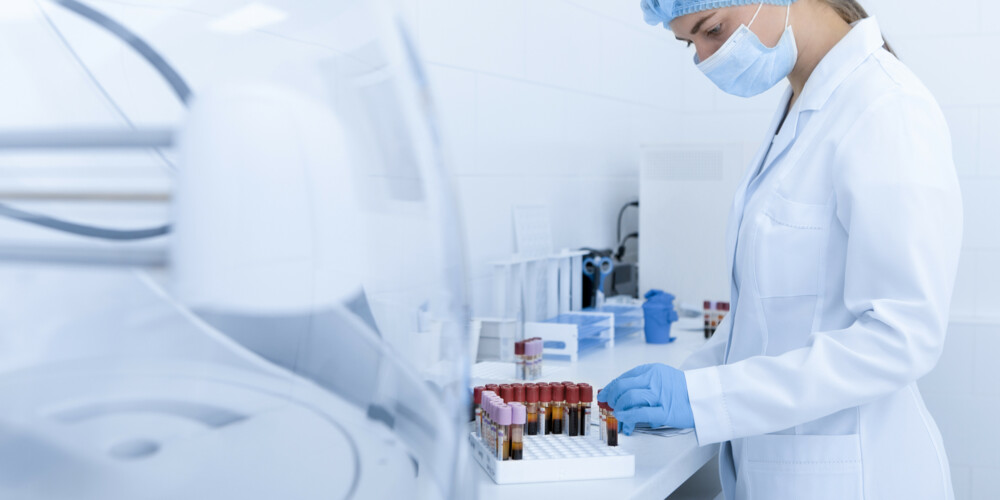
Healthcare – a buying opportunity for contrarian investors
2023 has been a disappointing year for investors in healthcare equities. The MSCI World Healthcare Index, the bellwether equity index for the healthcare industry, is hardly any higher now than it was at the beginning of the year. Meanwhile the S&P 500 has gained 17% year-to-date. Although that gain has largely been fueled by the sizzling performance of seven giant tech stocks, it can't be denied that most investors are sticking to the sidelines when it comes investing in the healthcare space.
We believe there are two reasons why so many investors have decided to stay away from healthcare stocks: Central-bank rate hikes in response to rampant inflation have had the greatest impact on the valuations of companies that are not yet generating a steady flow of income and that are dependent on external financing to stay in business. These are often biotechnology companies and firms that are developing tech-related applications such as sensors or measuring devices for digital health solutions. Mega caps in the pharmaceutical space, true to their defensive reputation, have been affected less by the aforementioned developments. The other reason is psychological in nature. The big breakthrough that was achieved with the development of COVID-19 vaccines increased public awareness of how a new therapeutic approach can play a critical role in overcoming problems that affect society as a whole. The flip side of the coin is that as the coronavirus pandemic faded in the rear-view mirror, investors turned away from the sector in droves.
Artificial intelligence is a theme that has attracted plenty of interest from investors lately. AI also happens to be an increasingly important tool in drug discovery and development processes, and in the medical technology industry. The healthcare sector’s increasingly impressive innovation power has attracted far fewer headlines, but it is equal in significance. This is evident, for example, in drug development processes. In the United States, which remains the world's largest market for healthcare, there have been 29 new drug approvals so far this year to the beginning of August. The chances are good, then, that more than 40 novel drugs will be granted marketing approval from the FDA in 2023, as in most years. Recent developments in the therapeutic areas of diabetes, cancer and Alzheimer's are particularly promising.
Alarming increase in the number of people with diabetes
Many of today's novel therapeutic approaches are targeting common diseases that are increasing in prevalence globally. Diabetes is an immense economic burden in the face of spiraling healthcare costs. The numbers speak for themselves: There are 500 million people living with diabetes worldwide, and not only in Western industrialized nations but increasingly in newly industrialized countries such as China, India and Saudi Arabia, a country where one in three adults has diabetes. The global cost of diabetes now stands at USD 1 trn, which corresponds to some 10% of global annual healthcare expenditures. And this astronomical sum does not even take the typical comorbidities and complications associated with diabetes such as heart attacks, strokes, renal failure and vision loss into account. The more than 300% increase in the economic burden over the last 15 years is alarming. It goes without saying that the market for medical devices that monitor and regulate blood sugar levels and insulin intake with increasing precision is huge and growing fast. Glucose monitoring devices have been developed that can send information via sensors in the skin to a receiver every five minutes and use algorithms to calculate the exact amount of insulin that must be delivered by an integrated insulin pump. New drugs are also available for patients with diabetes and obesity that should make diabetes an increasingly manageable condition.
Obesity is one of the main causes of diabetes. 13% of the US population had a body mass index of more than 30 in 1980. By 2020, this percentage had risen to 42%. On the medicine front, we are currently witnessing some very exciting developments. First and foremost, Novo Nordisk and Eli Lilly have developed medicines that – in simple terms – reduce feelings of hunger and help patients lose 15% to 20% of their body weight after a few months of treatment. The market potential is correspondingly huge – global sales in 2030 are expected to total USD 44 bn.
Taking the fight against cancer to a new level
The second major global therapeutic area is oncology. Twenty million new cases of cancer are diagnosed worldwide every year. The national cost of cancer care in the US alone amounts to USD 200 bn. Instead of chemotherapy, novel approaches are being pursued, such as antibodies that attack tumors on two different fronts, or new types of immunotherapies that are designed to activate the body’s own immune system to make it better and faster at identifying and eliminating tumor cells. Lung cancer and colorectal cancer are two types of cancer whose prevalence is on the rise worldwide due to poor diet and cigarette smoking. In addition to new drugs, an increasing number of cancer diagnostic methods have entered the market that are able detect the development of cancer at an early stage.
Encouraging developments in Alzheimer's research
The third major challenge is the growing prevalence of neurodegenerative diseases as a result of global demographic aging. Alzheimer's disease, by far the most common form of dementia, figures most prominently here. After decades of clinical failures in Alzheimer’s research, regulators approved Leqembi, a drug developed by Biogen/Eisai that is a disease-modifying therapy that effectively slows the progression of the disease. In clinical testing it delayed disease progression by nearly three years on average and it slowed the rate of cognitive decline by 27% compared with placebo. A drug from rival Eli Lilly is now being reviewed by the FDA too. These initial breakthroughs will likely unlock even more spending on Alzheimer's research worldwide in the coming years.
Healthcare stocks attractively valued
A quick glance at the valuation multiples for the MSCI World and for the healthcare sector (MSCI World Healthcare) reveals that the price/earnings ratios for both indexes are about the same, around 17 times forward earnings. Looking at profit growth rates, though, the comparison shifts in favor of healthcare. The price/earnings to growth ratio (PEG) of 1.9 for the healthcare sector is much more attractive than the total market's PEG of 2.6. Biotech stocks look particularly cheap with a P/E ratio of 14 and a PEG of 1.1. Investors with a countercyclical approach can now buy the sector at historically low valuations. Its full return potential will be unlocked once the broader investment community, attracted by the flashing momentum indicators, discovers the healthcare sector again.




